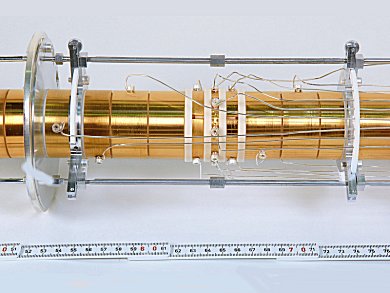The heaviest element on earth is uranium with an atomic number of 92. Superheavy elements of up to number 118 have been produced artuificially, but their atomic nuclei rapidly decay.
Protons in a nucleus fiercely repel each other with the second most powerful force in physics, the electric force. The strongest force known today, the strong force, overpowers the repulsion and holds the nucleus together. As its range is small, atomic nuclei above a certain size become unstable and break apart.
Large atomic nuclei are structured in layers of different numbers of protons and neutrons. Like with the electron shells of atoms, atomic nuclei with perfectly filled shells are more stable than others. This effect might causes comparatively huge atomic nuclei, which really ought to decompose, to be kept together. Physicists have long been searching for this subtle quantum effect.
An international team around Klaus Blaum’s group, Max Planck Institute for Nuclear Physics, Heidelberg, Germany, has been able to determine the strength of the shell stability in heavy nuclei with 152 neutrons for the first time. The precision experiment was performed at the GSI Helmholtz Centre for Heavy Ion Research, Darmstadt, Germany.
First the two elements 102 and 103 were produced with the heavy ion accelerator in Darmstadt. By weighing these elements with a varying number of neutrons the team found that the outer neutron shell must contain 152 neutrons to be full and stabilize the nucleus.
If such long-lived, superheavy elements can be produced artificially, they could possibly also be produced in rare events in the universe.
Image: Penning trap of the SHIPTRAP device © GSI Darmstadt; Gabi Otto
- Max Planck Gesellschaft, Munich, Germany




